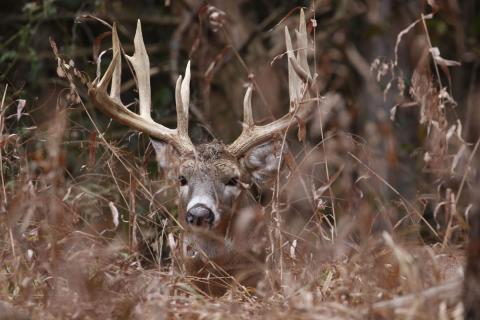New Research Affirms Value Of Record Books For Monitoring Big-Game Populations
A recent article in the peer-reviewed Journal of Mammalogy has confirmed that trophy record programs, such as the SCI Record Book and those maintained by the Boone and Crockett and Pope and Young clubs, have real scientific value for conservation of big-game species.
Record book entries have been invaluable in examining long-term population trends and the impacts of factors such as age- and sex-biased harvest and habitat change on antler and horn size; however, some have asserted that biases in record book entries (e.g., only the largest males are entered) invalidate conclusions based on these entries.
Of course, animal rights and anti-hunting organizations often make absurd assertions that record books exist only to document the winners of some sort of bizarre competition among hunters. In contrast, this scientific study used statistical analysis of record book entries to show that they “can provide a useful resource for assessing long-term changes in phenotypic changes in ungulates”.
As ecologists and wildlife managers know, reliable long-term datasets about wildlife populations are both extremely valuable for assessing the impacts of many management and ecological factors and extremely rare due to the cost and effort involved in collecting and maintaining the data.
Thus, natural history museum specimen collections and long-term survey data like the North American Breeding Bird Survey have been invaluable in examining population trends and impacts in various species. For big-game species, record books represent the best long-term datasets about antler and horn, with the B&C record book dating back to 1932, P&Y to 1961, and the SCI record book to 1971.
Critiques from scientists (in contrast to HSUS and similar organizations) have typically focused on the fact that record book entries are not random samples from the population and that they are biased by the minimum size requirements for entry. Many record book entries also lack important data that influence antler and horn size such as the age of the animal at harvest and habitat conditions.
Nonetheless, Taylor LaSharr and coworkers showed that these limitations can be acknowledged and accounted for and that these data sets remain extremely valuable. For example, record book data have been used to document effects of intensive harvest, habitat change and climate on a variety of North American game species.
SCI members can rest assured that their record book entries not only provide a tangible memento of a unique outdoor experience, but that maintenance of those records also contributes to long-term conservation of these species.–Dr. Christopher Comer, SCIF Director of Conservation


